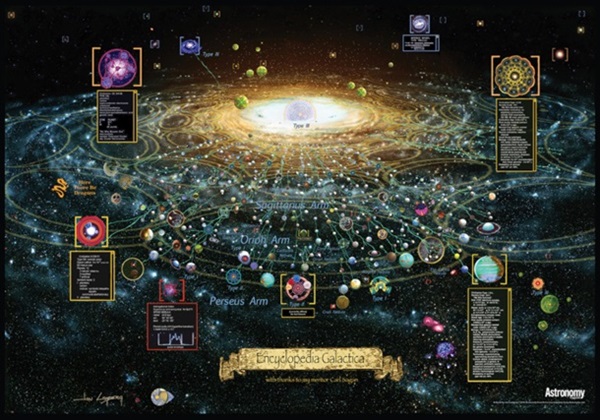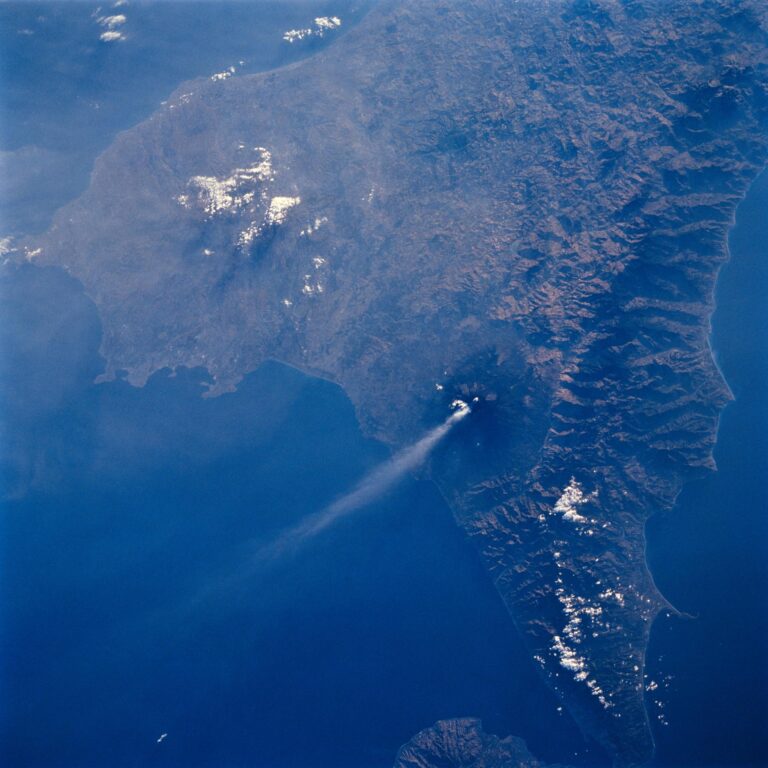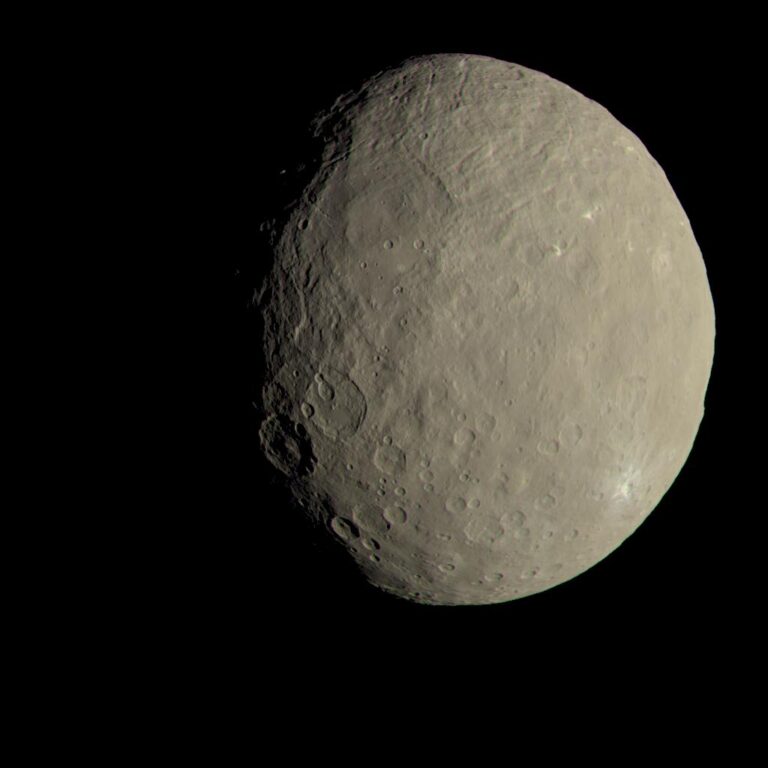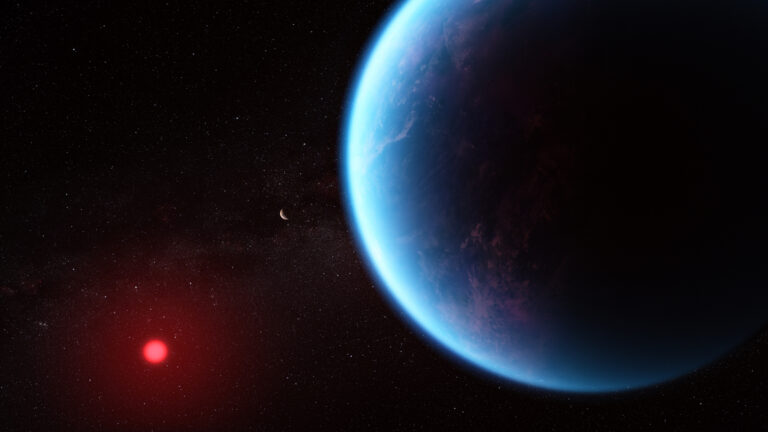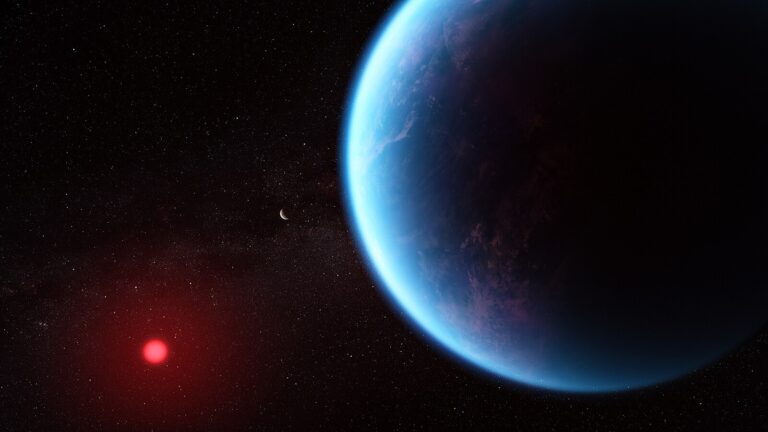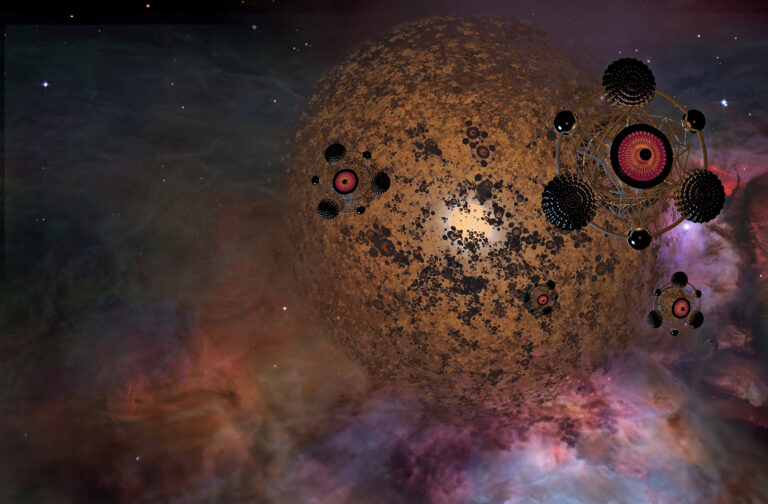Key Takeaways:

Encyclopedia Galactica is a unique poster exclusively available from Astronomy magazine through MyScienceShop.com, depicting our
home galaxy as a network of civilizations at varying stages of technological advancement alongside our “Pre-Contact” Earth. You can get your copy here!
A Mutual Obsession
The Encyclopedia Galactica is a series of paintings that was the basis for a sequence in the TV series Cosmos, and now realized as a new poster available through Astronomy magazine and MyScienceShop, shown below. The concept and its realization was a bond with my friend and colleague Carl Sagan.
More than 45 years after we began it, I still imagine what it might teach us if we can ever find it.
The Password Is Anti-Center
The new poster shows some of the civilizations in our corner of the galaxy, as well as other encyclopedia entries. Green communication channels tend to fall along galactic radii, since that is one obvious, guessable direction for mutually successful Search for Extraterrestrial Intelligence (SETI) transmissions and searches. Natural galactic neighborhoods may thus be formed. The “wi-fi link” to the Encyclopedia Galactica may lie along our galactic radius, password “anti-center” (the least noisy direction to search). Although not yet part of the communications network, Earth is shown by its own interstellar calling card, the Voyager Golden Record, whose familiar cover was designed by Frank Drake and myself. The poster uses my recently updated Portrait of the Milky Way, now also available in MyScienceShop, here.
Dyson Lattice
I painted Dyson Lattice in the winter and spring 1975. I can date this with some accuracy because of the letter below. Carl was trying to plan a Toronto engagement to coincide with a visit with me. My goal was to complete the painting—and a draft of the text— by the time he arrived.
Carl and I had become friends in 1972. What started with a fan letter led to a partnership based on a shared cosmic perspective. We each felt an intellectual and creative attraction that was as fun and stimulating as a friendship can be. At first I was in awe of him, but he talked to me as an equal when we spoke about the cosmos and the beings who might inhabit it. He admired my intuition on a topic where intuition is rarely useful. I think I offered an artistically based — call it visionary — point of view that he did not find among the university scientists and NASA engineers who peopled his professional world.
In any case, we saw a lot of each other, mostly at Cornell, where I came for intensive creative sessions on the many projects we were doing. Sometimes he’d invite me to scientific meetings or to join his family for Thanksgiving. In Ithaca, Carl and Linda Sagan often hosted gatherings where I met authors Isaac Asimov, Theodore Sturgeon, and Diane Ackerman, and astronomers Frank Drake, Fred Hoyle, Thomas Gold, and Freeman Dyson. These visits always taught me things that ended up finding their way into my artwork, especially in the series of paintings I called Encyclopedia Galactica, based on an old trope of sci-fi — Asimov used it in his Foundation series, as did Douglas Adams in The Hitchhiker’s Guide to the Galaxy — but it had never before been visualized in art.
Another painting I showed Carl that night depicted the type of civilizations he had written about, located in the galaxy. A version of this painting appeared as the frontispiece in The Cosmic Connection. I later donated it to the Arecibo Observatory, site of many SETI observing programs.
Carl urged me to continue with the challenging task of imagining extraterrestrial civilizations. Dyson Lattice is the final, largest and most ambitious of these paintings. Physicist Freeman Dyson described the concept at the 1971 CETI conference.
Dyson Lattice was not the last variation on the Encyclopedia Galactica I did with Carl. In 1976 he commissioned me to create an installation for the new home he was building in Ithaca.
In his living room I built a 6-foot-long 3D model galaxy, painted on layers of Plexiglas in blacklight paints, and lit by ultraviolet lights. With all the room lights off, the glowing pinpoints of a spiral galaxy filled a big tank like an aquarium full of stars. The portrait of me between the Plexiglas layers during construction shows the scale.
The Mandala
The symbols I use to represent civilizations, such as the Dyson lattice, are not intended as photo-realistic depictions. Rather they are icons, somewhat more complex than logos, perhaps similar in spirit to the crests of powerful families or organizational seals. The designs I chose to chose are mandalas — radially symmetrical designs — that are widespread in human art and in nature. I fancy their appeal may be universal as well, as in the use of galactic radii to ease the search for signals.
To me the mandalas suggested many things: the appearance of a portal through space; or perhaps a symbol of a highly evolved technology; or many civilizations linked to some common purpose across an entire galaxy, something that might translate as “enlightened technology” or even “technology of enlightenment.” Carl liked their ambiguity.
Here’s where the story gets a little weird. In 1980 I had an exhibition at the Saxe Gallery in Toronto, where Dyson Lattice was first exhibited). One day I received a call from the gallery saying that a couple was most anxious to meet me. They explained that they had just returned from Italy where they had seen a rare “diatret” called the Trivulzio Cup. This kind of late Roman Empire cup consisted of a supporting lattice of linked glass rings holding the cup.
There is no other Roman design remotely like it, and nobody knows where it came from or what it signified. Viewed from above, the pattern of linked circular figures looked exactly like the ringed pattern in my cosmic mandalas. When this couple saw my painting, they were instantly reminded of the Trivulzio Cup and was sure it must have been the inspiration. Of course, I had never heard of the Trivulzio Cup before, but felt the unknown glass artist and I shared a similar feeling for geometry. Might such a connection of minds across the ages also appear between civilizations?The Legends of the Encyclopedia Galactica
In the first painting in the series, the one Carl fell in love with, I had written the text entirely myself — my conception of how our species might be described in a galactic encyclopedia. What I really had in mind was the internet, but that was 20 years in the future, so I didn’t call it that.
The next painting in the series depicted a network of connected civilizations in a globular cluster orbiting the Milky Way, a network of networks forming a single civilization. With Carl’s help I developed the text that describes this vast and ancient network of planets.
Frank Drake, a Cornell radio astronomer and SETI pioneer (and later my boss on the Voyager Golden Record) helped me work out the depiction of pulsars as navigational beacons.


